The waters off Texas are home to some of the most fearsome, fascinating, and downright mysterious creatures on the planet. You’ve heard of the great white, the bull shark, and the hammerhead—but there’s so much more lurking beneath the waves.
Texas’ coastline is a hidden playground for sharks you’ve probably never heard of. These incredible predators thrive in the Gulf of Mexico, proving that the ocean is far more than just a vast blue abyss.
From the sleek and fast to the oddly majestic, each of these sharks has its own story. Some are masters of stealth, while others flaunt their size in all its terrifying glory.
If you think you know sharks, think again—Texas has a whole other world of them just waiting to be discovered!
Bonnethead Shark

Ever seen a hammer-shaped head on a shark? Meet the Bonnethead Shark, a cousin of the Great Hammerhead. This small, shy species glides through the warm Texas coastal waters, often mistaken for its larger relatives.
Bonnetheads are unique for their diet, as they enjoy munching on seagrass along with crabs and shrimp. This makes them one of the few omnivorous shark species. Their small size and gentle temperament make them less intimidating to beachgoers.
If you’re lucky, you might spot these curious creatures near the sandy shores, darting playfully through the waves.
Bull Shark
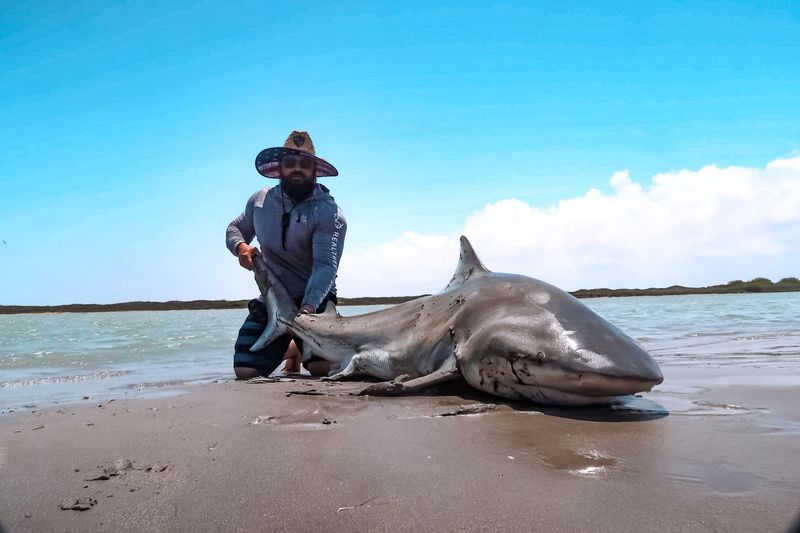
With a reputation as fierce as its name, the Bull Shark is one of the most formidable predators off the Texas coast. Known for their aggressive nature and ability to thrive in both salt and freshwater, these sharks are often found in estuaries and rivers.
Bull Sharks are robust and stocky, with a broad snout and a powerful build. They have the remarkable ability to travel far upriver, sometimes even venturing into freshwater lakes.
Admire them from a distance, as these sharks command respect in the aquatic hierarchy of Texas waters.
Spinner Shark
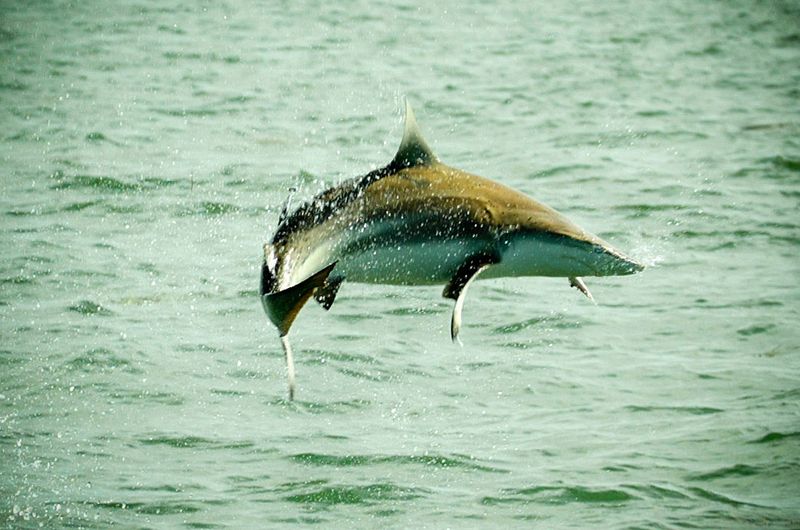
Ever witnessed a shark perform aerial acrobatics? The Spinner Shark earns its name by leaping out of the water and spinning in mid-air. These agile hunters frequent the Texas coastline, chasing schools of fish with impressive speed.
Their slender bodies and pointed snouts make them efficient predators, and their spinning behavior is a sight to behold. While not dangerous to humans, their energetic displays add excitement to the waters.
Look out for these thrill-seeking sharks as they twist and turn, creating a spectacle that’ll leave you in awe.
Blacktip Shark

Graceful and quick, the Blacktip Shark is a common sight along the Texas coast. Their name comes from the striking black tips found on their fins, easily recognizable even from a distance.
These sharks are often seen in large schools, especially during their annual migration. They feed on smaller fish and squid, darting through the water with remarkable agility.
Blacktip Sharks are generally wary of humans, but their presence near the shore adds a touch of drama to the seascape. Keep an eye out for their iconic fins cutting through the waves.
Lemon Shark
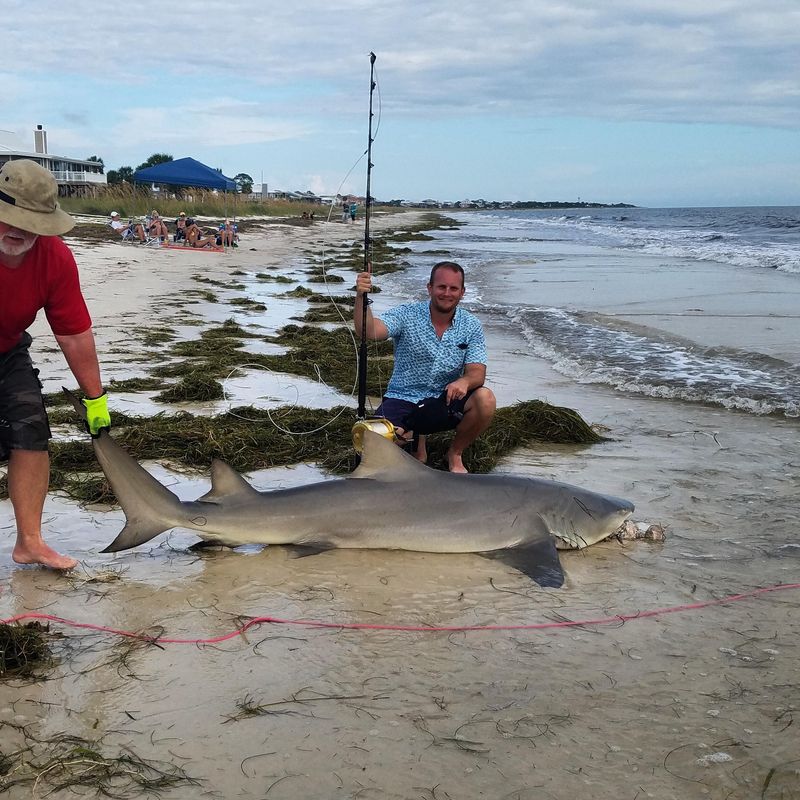
Known for their distinctive yellow-brown coloration, Lemon Sharks are the masters of camouflage around the sandy ocean floors of Texas. Their name is a nod to their lemon-like hue, which helps them blend seamlessly with their environment.
Lemon Sharks are social creatures, often spotted swimming in groups. They have a relaxed demeanor, making them a favorite among divers exploring the coastal waters.
Despite their laid-back appearance, they’re skilled hunters, adept at catching fish and crustaceans. Spotting one is a tranquil yet thrilling experience for anyone venturing into the depths.
Nurse Shark
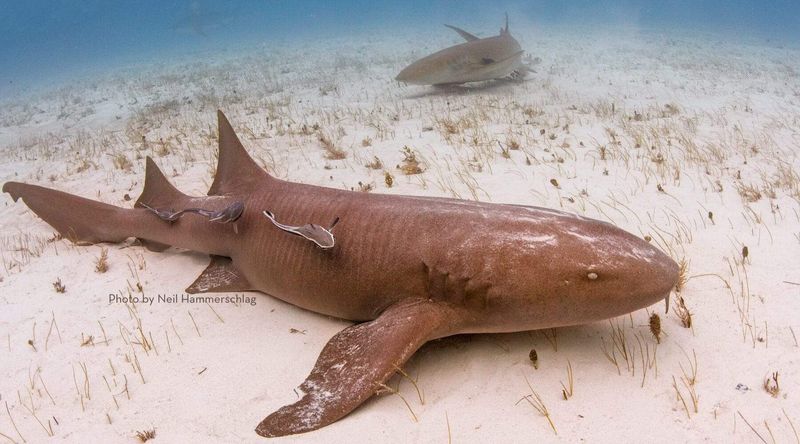
The Nurse Shark, with its docile nature and sluggish movements, is a peaceful resident of the Texas coast. These bottom-dwellers are easily recognized by their broad, flat bodies and whisker-like barbels near their mouths.
Unlike their more aggressive cousins, Nurse Sharks prefer a quieter life, often found resting under rocky overhangs or coral reefs. They feed at night, sucking up prey like a vacuum cleaner.
Their presence adds a serene, almost mystical quality to the underwater landscape, inviting divers to observe them from a respectful distance.
Sandbar Shark

Recognizable by their impressive dorsal fin, Sandbar Sharks glide majestically through the Texas coastal waters. They prefer shallow areas with sandy or muddy bottoms, where they patrol the ocean floor.
These sharks have a strong build and are known for their long migrations, often traveling between feeding and breeding grounds. They feed mainly on smaller fish and invertebrates.
For those venturing into the Gulf, spotting a Sandbar Shark is a thrilling testament to the diverse marine life that thrives in these waters.
Atlantic Sharpnose Shark
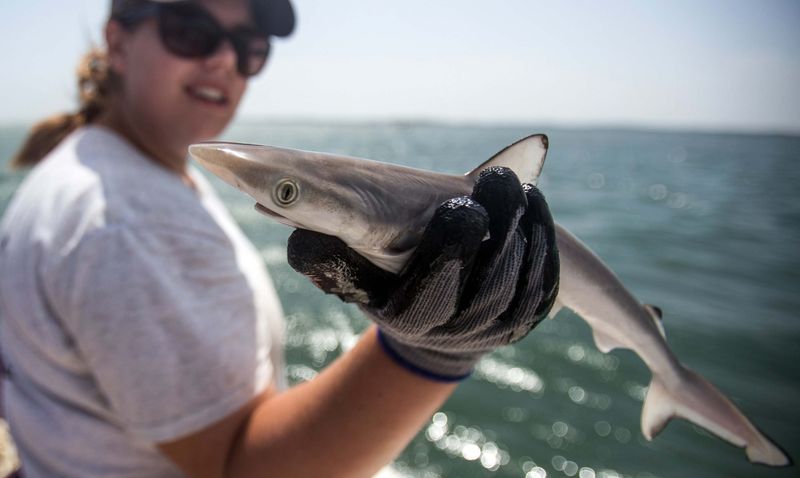
Despite their small size, Atlantic Sharpnose Sharks pack plenty of character. These diminutive sharks are common along the Texas coast, recognized by their slender bodies and sharp noses.
Often found in shallow bays and estuaries, they are curious creatures, sometimes venturing close to the shore. They feast on small fish and crustaceans, making them a vital part of the marine ecosystem.
Their playful antics and distinctive appearance make them a favorite among locals and tourists alike, adding a splash of excitement to Texas’s seaside adventures.
Scalloped Hammerhead Shark
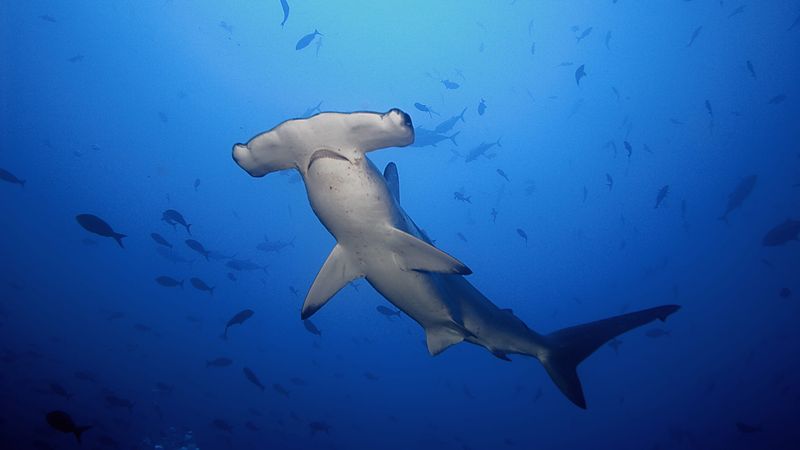
With a head that seems to defy conventional design, the Scalloped Hammerhead Shark is an architectural marvel of nature. These sharks are frequent visitors to the deeper waters off the Texas coast.
The unique shape of their heads provides superior sensory capabilities, allowing them to detect prey with precision. They often swim in large schools, known for their synchronized movements.
Observing these sharks is like watching a well-choreographed dance, as they gracefully glide through their oceanic realm, showcasing nature’s creativity at its best.
Tiger Shark
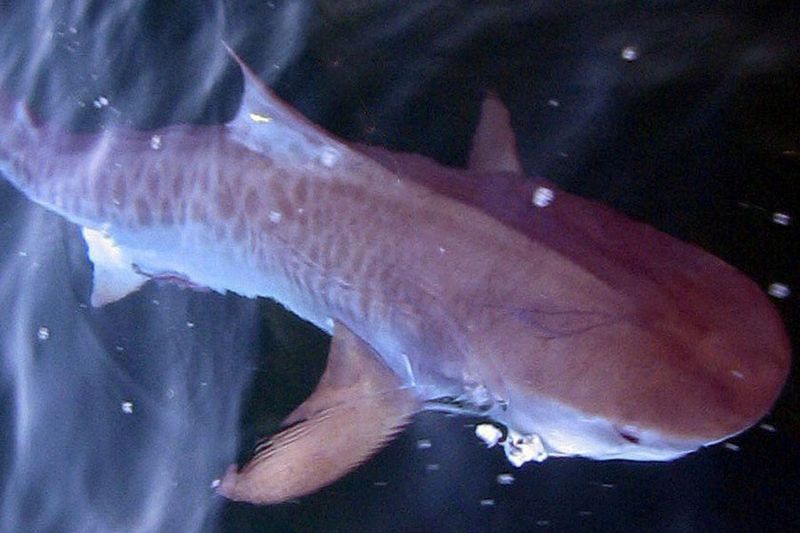
Known for their striking striped pattern, Tiger Sharks are powerful predators patrolling the Texas coast. These apex predators have a fierce reputation, often considered the “garbage cans of the sea” for their varied diet.
Their stripes fade as they mature, but their hunting prowess remains unmatched, feeding on fish, seals, and even sea turtles. Despite their formidable nature, they’re a vital part of the marine ecosystem.
Encountering a Tiger Shark is both thrilling and humbling, a reminder of the wild, untamed beauty that lies beneath the waves.
Great Hammerhead Shark
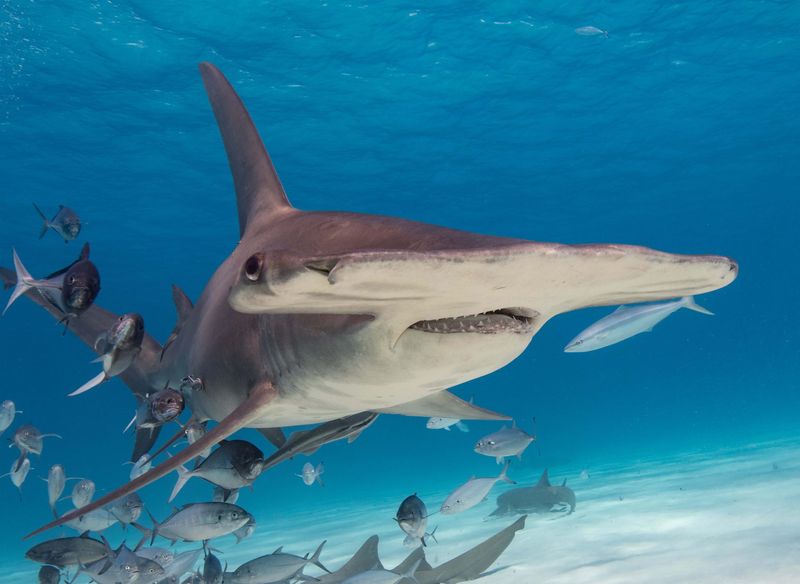
The Great Hammerhead Shark, with its wide, flat head, is an iconic figure in the waters off Texas. These solitary hunters are known for their wide-ranging migrations and keen hunting skills.
Their unique head shape allows for heightened sensory perception, giving them an edge in tracking down prey. Despite their size, they are agile swimmers, often seen patrolling the open ocean.
Spotting a Great Hammerhead is a memorable experience, as they exude a raw power and elegance that captivates all who witness them in their natural habitat.
Dusky Shark
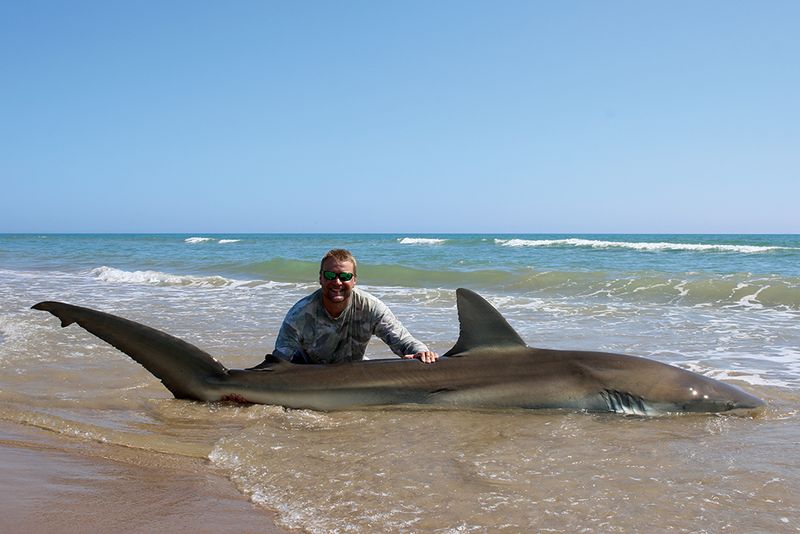
Dusky Sharks are the stealthy hunters of the Texas coast, masters of blending into the ocean’s dimly lit depths. Their dusky grey color and streamlined bodies make them efficient predators.
These sharks are known for their long migrations and are often found near continental shelves. They feed on a variety of marine life, including fish and squid.
Observing a Dusky Shark requires patience and a keen eye, but the reward is witnessing one of the ocean’s most skilled and elusive hunters in action.
Sand Tiger Shark
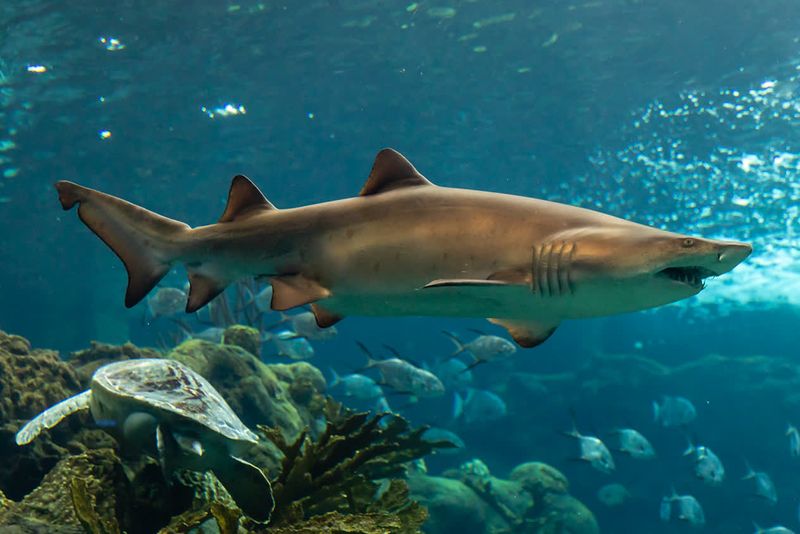
The Sand Tiger Shark, with its fearsome appearance, is a paradox off the Texas coast. Its menacing teeth are always visible, yet it is surprisingly docile.
Often found in inshore waters, these sharks prefer to swim slowly, giving observers a good look at their unique features. They are nocturnal hunters, preying on bony fish and small sharks.
Their presence adds an intriguing element to the marine landscape, challenging perceptions of what makes a predator truly fearsome. Their calm demeanor belies their fearsome looks, making them a captivating sight.
Thresher Shark

The Thresher Shark’s most distinctive feature is its long, whip-like tail, which it uses to stun prey. Found off the Texas coast, these sharks are known for their hunting prowess and striking appearance.
Their elongated tails can be as long as the rest of their bodies, making them agile and formidable hunters. They are often seen leaping out of the water, a testament to their strength and agility.
Witnessing a Thresher Shark in action is a breathtaking experience, showcasing the dynamic and powerful nature of the ocean’s inhabitants.
Silky Shark
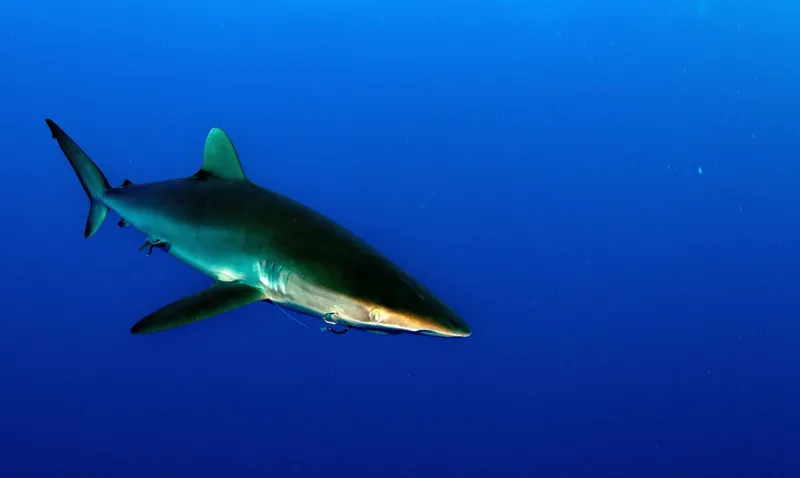
Silky Sharks are aptly named for their smooth, sleek appearance, gliding gracefully through the Texas coastal waters. These sharks are highly migratory, often found in the open ocean.
Their streamlined bodies and active swimming habits make them efficient predators, feeding on fish and cephalopods. They are curious creatures, sometimes approaching divers with inquisitive looks.
The Silky Shark’s elegance and agility make them a fascinating subject for those exploring the underwater world. Observing them is a reminder of the ocean’s endless wonders and mysteries.
Goblin Shark
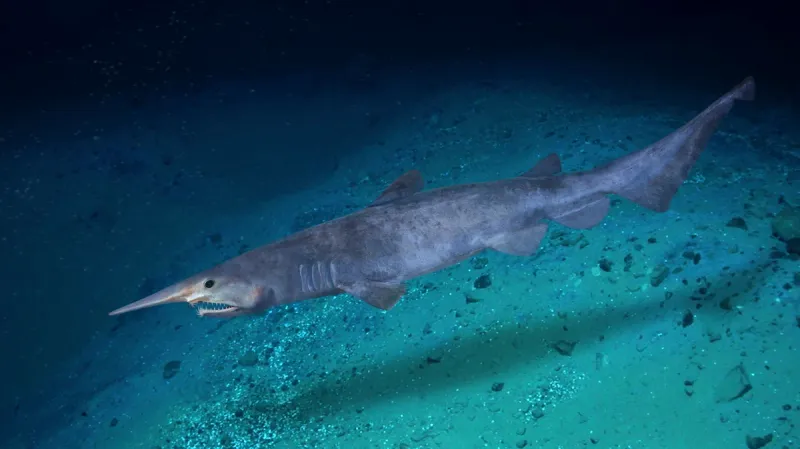
Picture an underwater ghost, lingering in the shadowy depths. The Goblin Shark, with its bizarre, elongated snout and translucent skin, is a true relic of the deep. Its pinkish-gray body glides silently through the murky waters off Texas, adding an eerie allure to the oceanic landscape.
Don’t let its appearance fool you. Though it seems like a creature from a nightmare, this shark is a slow-moving, elusive predator, preying on unsuspecting fish and squid. Its jaw extends dramatically, snagging prey in a swift motion.
Intriguingly, this shark’s lineage traces back 125 million years, making it a living fossil in our modern seas.

